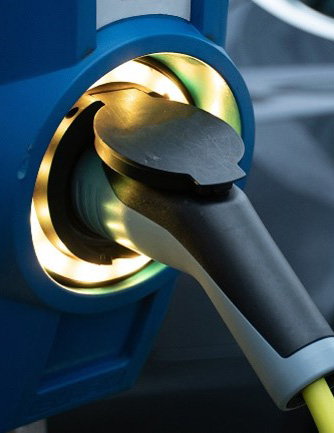Providing industry with practical solutions
Decarbonising the transport sector is much talked about, and research by Professor Martina Linnenluecke and Professor Stefan Trueck’s teams show a 30 per cent reduction in vehicle fleet emissions can be achieved.

How to decarbonise the transport sector
A tool that is sufficiently refined to identify whether a heavy-footed driver would be better suited to a different vehicle to reduce carbon emissions within a business’s fleet vehicles is just one outcome of a project to give workable options to industry.
This is now possible after a collaboration between Toyota Fleet Management (TFM) and a joint team from the Centre for Corporate Sustainability and Environmental Finance and the Centre for Risk Analytics to manage carbon emissions in the transport sector.
“Toyota entered into the research partnership in 2019, wishing to add a research component to the strategy they had in mind, with the addition of academic rigour,” Linnenluecke says.
“They were committed to lower carbon emissions in fleet management, but how would they optimise this, while still fulfilling the needs of their clients?
“There was increasing interest on behalf of business and commercial clients, who need to have an idea of their carbon emission profile,” says Linnenluecke.
A carbon calculator is among the key outputs of the project, Trueck says: “This was to give TFM a tool, so they can talk to customers, discuss the carbon footprint of their fleet, and offer options.”
Three components are involved, with the first step to help business work out how ‘dirty’ their fleet is. This provides information on CO2 emissions per kilometre driven, ranking a customer in the TFM universe so they can compare themselves with others.
Then, using accurate data from fuel cards purchases and odometer readings, and not relying solely on the vehicle manufacturers carbon footprint data alone, rigorous data analysis and statistical techniques are applied.
“This tells the fleet customer how much carbon they are actually emitting based on real fuel consumption, so they can see how actual usage compares to the manufacturer’s specifications,” says Trueck.
The third element allows the customers to examine how they could reduce the carbon footprint of their fleet, by potentially replacing vehicles with higher emissions with cleaner alternatives. While Toyota has invested extensively in hybrid vehicle development, these are not the only options presented and vehicles from other manufactures may be suggested.
Factoring in a future price for carbon, or internal carbon pricing within a business, are other strands for customers to consider when adopting practices to manage the carbon emission of their fleet as part of their strategy.
The research team included members of both the Centre for Risk Analytics, and the Centre for Corporate Sustainability and Environmental Finance: Dr Zahra Borghei, Dr Ashley Ding, Dr Lin Han, Professor Martina Linnenluecke, Dr Matteo Malavasi, Professor Tom Smith and Professor Stefan Trueck.